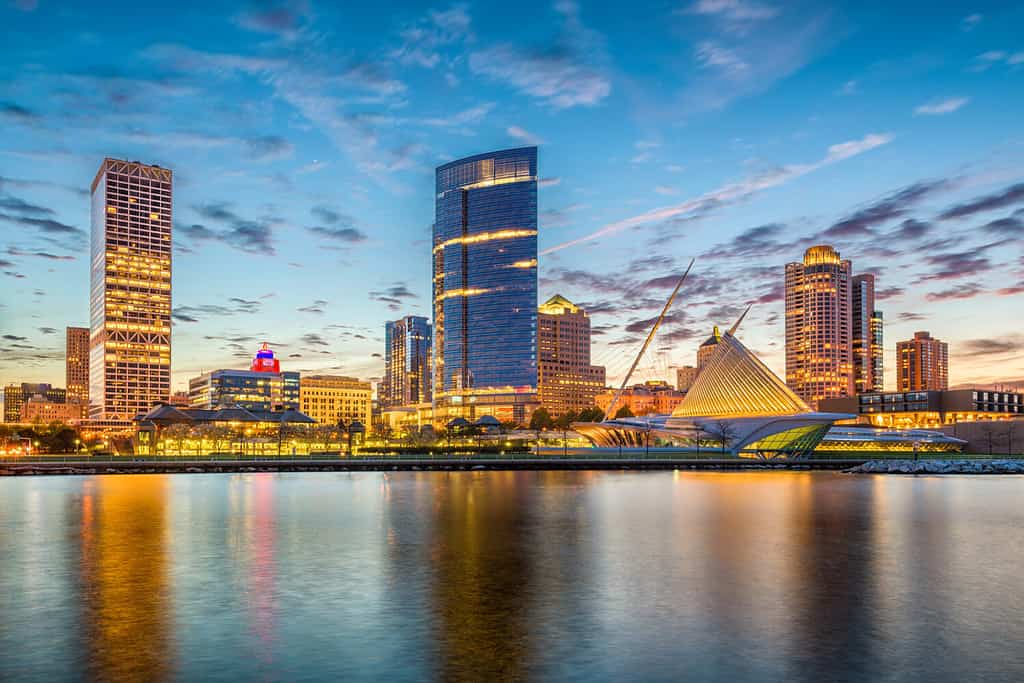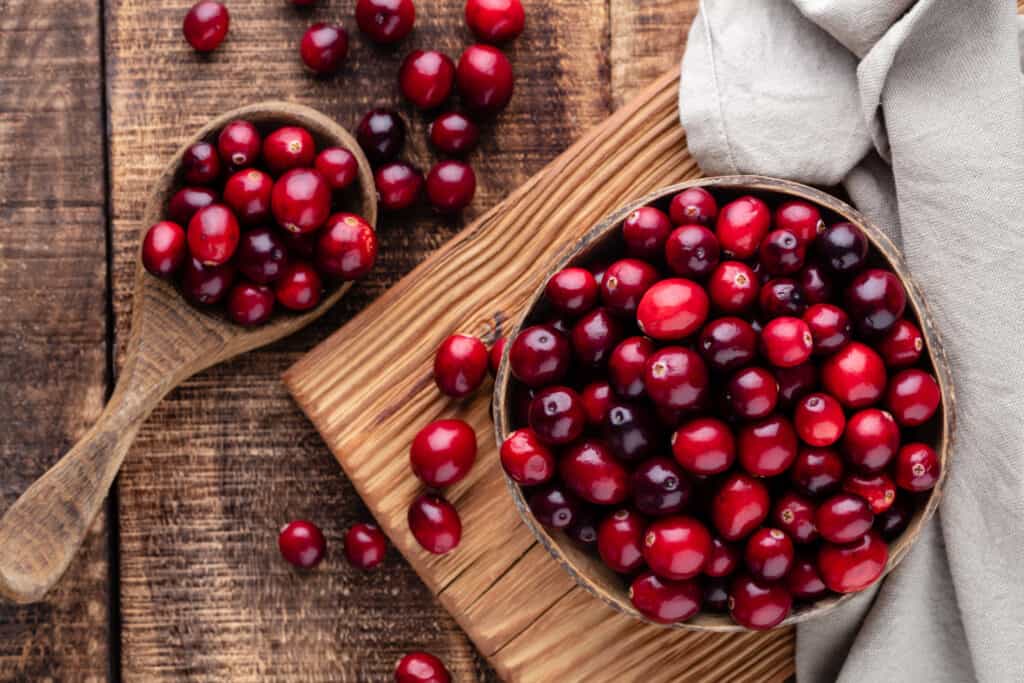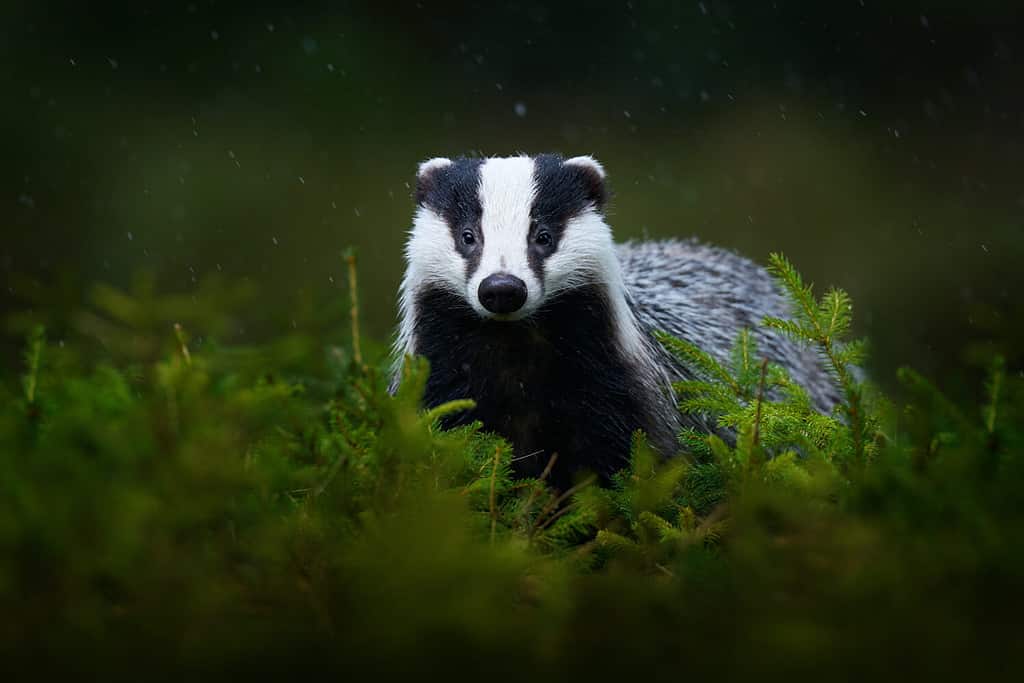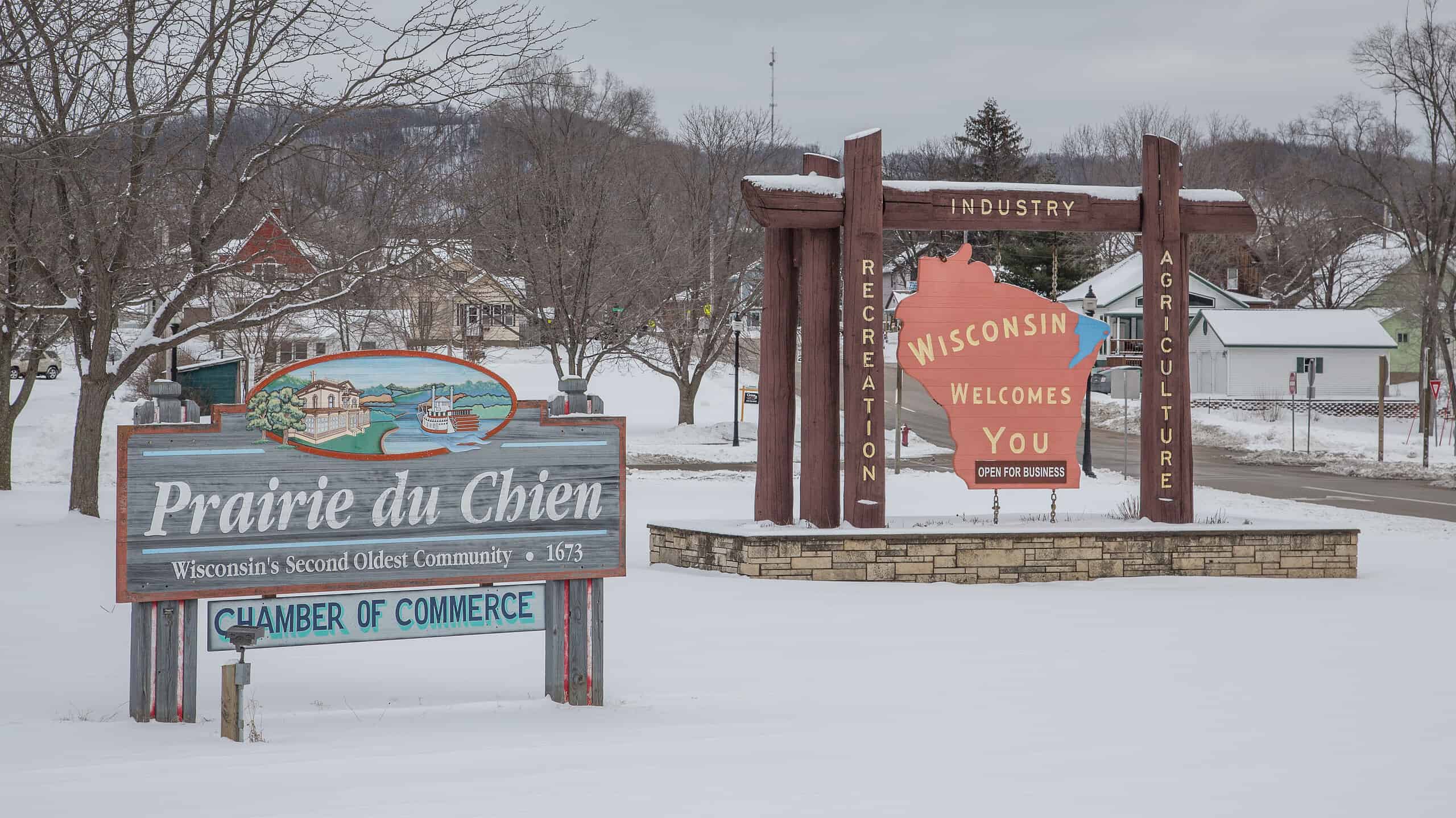There are 50 states in the United States of America, and it can be kind of hard to keep track of them all. That’s why we want to make sure you have the chance to familiarize yourself with each one and learn a little bit about it. Today’s quest is the Midwestern state of Wisconsin, home to the Ice Age Trail and the Beast of Bray Road. This beautiful state holds a lot of wonder and exploration, and we’ll do our best to share that with you as we show you just where Wisconsin is and who lives there.
Where is Wisconsin on a Map?

A beautiful sunset panoramic view of Wisconsin’s state capital building and the surrounding city of Madison, Wisconsin.
©Structured Vision/Shutterstock.com
First, we’ll provide a fantastic interactive map of Wisconsin so you can take a closer look. Wisconsin borders four states and two Great Lakes. To the north, Wisconsin shares a border with Lake Superior. You can see how the Upper Peninsula of Michigan shares a border with Wisconsin in the northeastern corner of the state and gives way to Lake Michigan on the eastern side. To the south, Illinois and Iowa both share a border with Wisconsin while to the west, Minnesota hugs Wisconsin like a friendly neighbor.
The state capital of Wisconsin is Madison. Zoom in on the map to see its location in the southern central portion of the state. You can also see Milwaukee – the largest city by population in Wisconsin.
Population Information

Milwaukee is the largest city in the state with a population of 569,330 people.
©Sean Pavone/Shutterstock.com
There are 5.896 million people in Wisconsin as of the 2021 census. Nearly 87 percent of the population is white, while 6.6 is Black and only 1.2 percent are described as First Nations and/or Indigenous. 3.2 percent of the population is Asian and 7.6 percent is Hispanic or Latino. The midwestern state experiences severe racial disparities and inequities. In assessment data from Wisconsin schools, the state ranked the worst in racial disparity. According to the Center on Wisconsin Strategy (COWS), it ranks among the worst states in the entire nation when it comes to racial inequality. In fact, statistically assessed disparities back this up in several categories, including poverty, unemployment, incarceration, and the attainment of education.
Wisconsin ranks in the top ten states for STEM (Science, Technology, Engineering, and Math) careers, with Madison being the number one city in the state for STEM careers. The average state income is $33,327 while the average cost of living is $29,784. According to the Missouri Economic Research and Information Center, Wisconsin ranks 22nd for the lowest cost of living in the nation. Hawaii had the highest cost of living in this 2023 data set while Mississippi had the lowest.
Major Cities
Wisconsin is primarily made up of smaller towns and cities, but a few large cities do stand out. We’ve included a helpful table of the 10 largest cities in the state and their populations.
| City | Population (2021 Census Data) |
|---|---|
| Milwaukee | 569,330 |
| Madison | 269,196 |
| Green Bay | 107,015 |
| Kenosha | 99,286 |
| Racine | 77,127 |
| Appleton | 74,854 |
| Waukesha City | 71,256 |
| Eau Claire | 69,441 |
| Oshkosh | 66,607 |
| Janesville | 65,942 |
The total population of these ten cities combined is 2,069,454, which means that about one-third of the overall population is divided among the top 10 largest cities. Some smaller cities and towns include Menomonie, Prairie Farm, Spread Eagle, and Stevens Point.
Major Industries in Wisconsin

Wisconsin produces over 50 percent of the world’s cranberries.
©iStock.com/gitusik
Wisconsin has four major industries – agriculture, manufacturing, shipping, and mining. Agriculture is a huge part of life for many Wisconsinites. The state produces 60 percent of the nation’s cranberries and 52 percent of the world’s cranberries. Yes, it is a little-known fact that cranberries are native to this great state and that it is the leading producer of cranberries in the entire world. Wisconsin contains 241 separate cranberry farms that cover 20,641 acres and produce more than 250,000 tons of cranberries per year.
Aside from being the cranberry capital of the world, it also boasts a prestigious dairy industry. Some people may think that California is the number one dairy state, based upon the western giant containing the largest number of milk cows in the nation. While California does lead in milk production, it cannot compete with the cheese and other dairy products that come from Wisconsin. According to the Wisconsin Department of Agriculture, the state rightfully claims the title “America’s Dairyland”. Wisconsin has a cheesemaking tradition that dates back to the 19th century, and it proudly continues its legacy today.
Climate in Wisconsin
Wisconsin has a continental humid climate that experiences four distinct seasons. The summers are incredibly warm and humid while the winters can be blisteringly cold. The hottest temperature ever recorded was a blistering 114 degrees Fahrenheit on July 13, 1936. The coldest temperature ever recorded was -55 degrees on February 4th, 1996. In 2019, the state broke records with a coldest windchill of -60 degrees. Windchill refers to the calculated measure of the cooling effect of the wind on the body. Some 2019 temps reached values of up to -40 degrees Fahrenheit with windchills in the -50s and -60s.
What about average temps? The average overall temperature of Wisconsin ranges between 40 and 48 degrees Fahrenheit. This average is a result of warm summers and cold winters. We used information from the United States Climate Data website to find seasonal averages. The coldest month of the year in Wisconsin is January with an average high of 20 degrees and an average low of one degree. The hottest month of the year in Wisconsin is July with an average high of 78 degrees and an average low of 55 degrees. Temperatures in Wisconsin rarely break 100 degrees – an average of 2-4 days per year. In Milwaukee, the temperature has only broken 100 degrees about 20 times since 1871. Other areas are not quite so lucky, but overall the state is quite temperate in the summers.
Expect an extended cold season if you move to Wisconsin. Only about 3.6 months of the year are warm summer months. Spring and Fall are both pleasantly cool and crisp with moderate rainfall. Winters vary from mild and snow-laden to severe and lacking in precipitation.
Wildlife in Wisconsin

The badger is the state animal of Wisconsin.
©Ondrej Prosicky/Shutterstock.com
Wisconsin is ripe with wildlife, including an absolutely booming white-tail deer population. The lands are quite rich and fertile and attract a number of different animals. According to the Wisconsin Department of Natural Resources, the state hosts 665 different invertebrate species. The state is excellent for birdwatching, where you can see snowy owls, swans, turkeys, doves, grouse, bald eagles, red-tailed hawks, a variety of duck species, pheasants, and even loons.
Wisconsin is also a fantastic fishing destination. The incredibly populous lakes and rivers give home to largemouth bass, lake sturgeon, Northern pike, walleye, salmon, trout, perch, musky, and catfish. Drainage from Superior feeds several lakes, making diverse waterways for several fish to spawn and thrive. This is true for amphibians and reptiles, as well, who thrive in the riparian areas surrounding water. The state hosts 19 species of amphibians and 36 species of reptiles.
Mammals include bats, bears, cougars, elk, and wolves. Rural and urban areas also see an abundance of skunks, opossums, squirrels, and chipmunks. The badger is a more elusive animal, but the state honors it as the official state animal of Wisconsin.
What about rare animals? Wisconsin has a lot of them, including the short-eared owl, the great egret, the lake sturgeon, the western wormsnake, and the northern flying squirrel. A complete list of rare animals in Wisconsin is available through the Wisconsin DNR website.
Thank you for reading! Have some feedback for us? Contact the AZ Animals editorial team.








